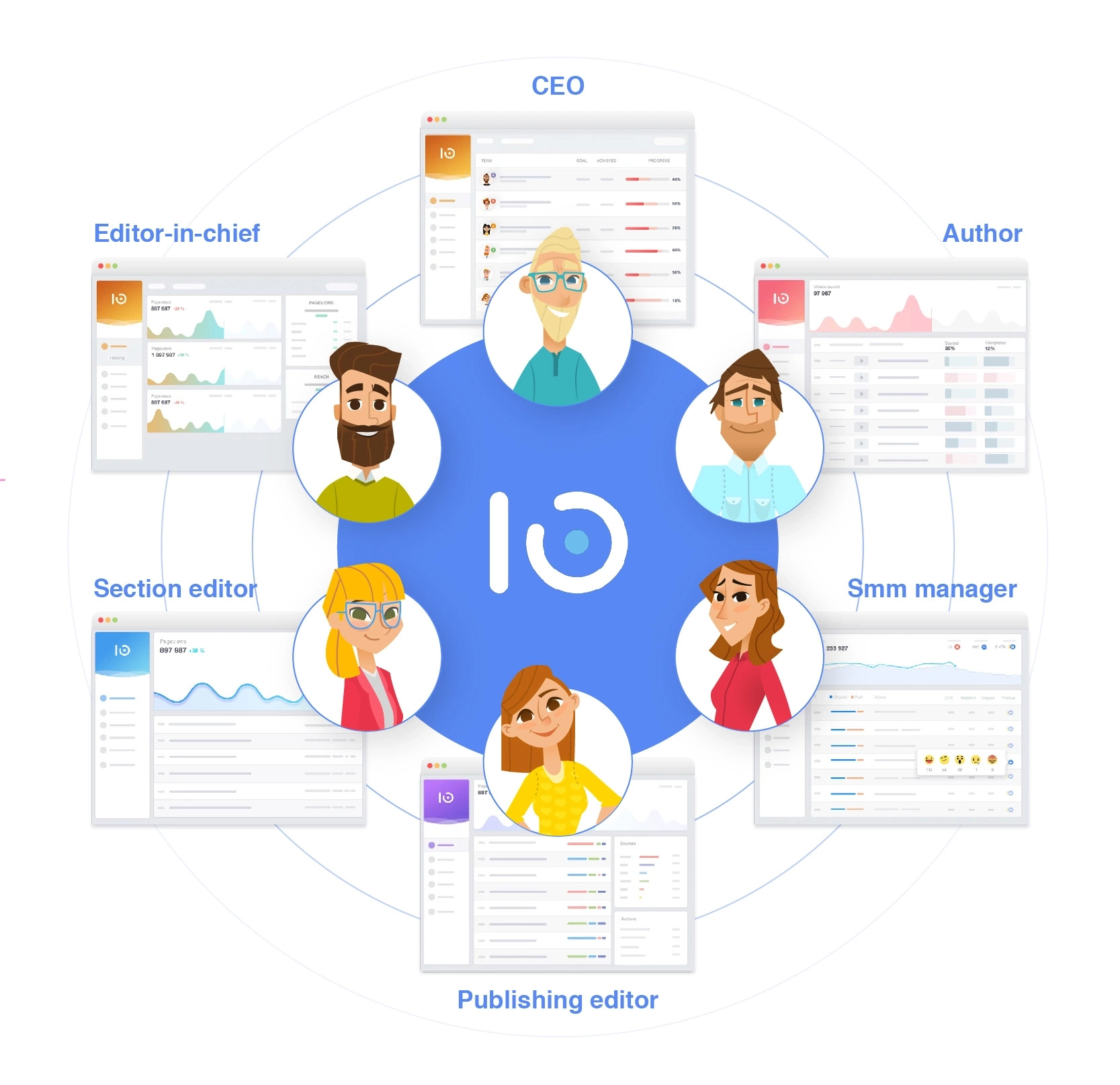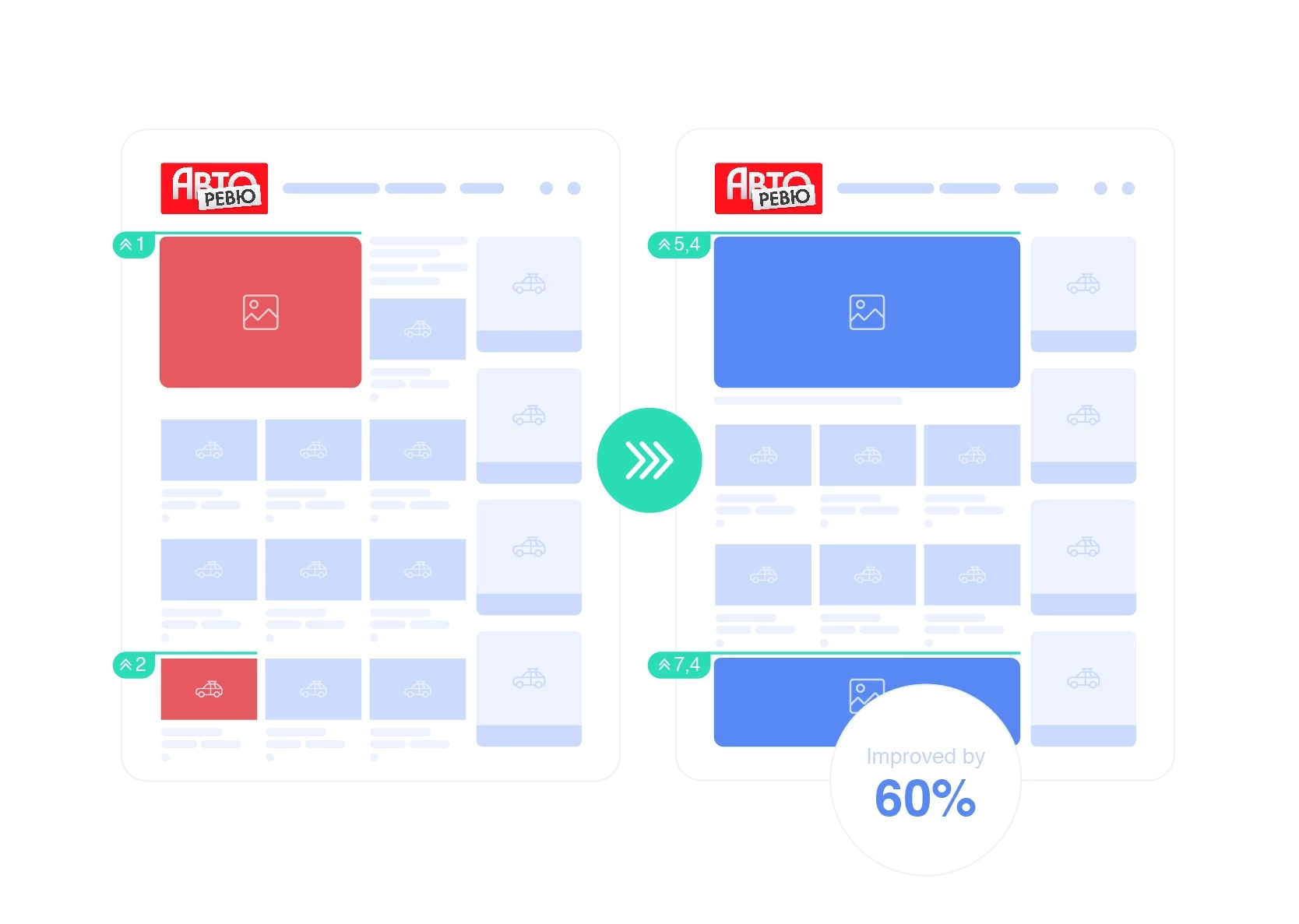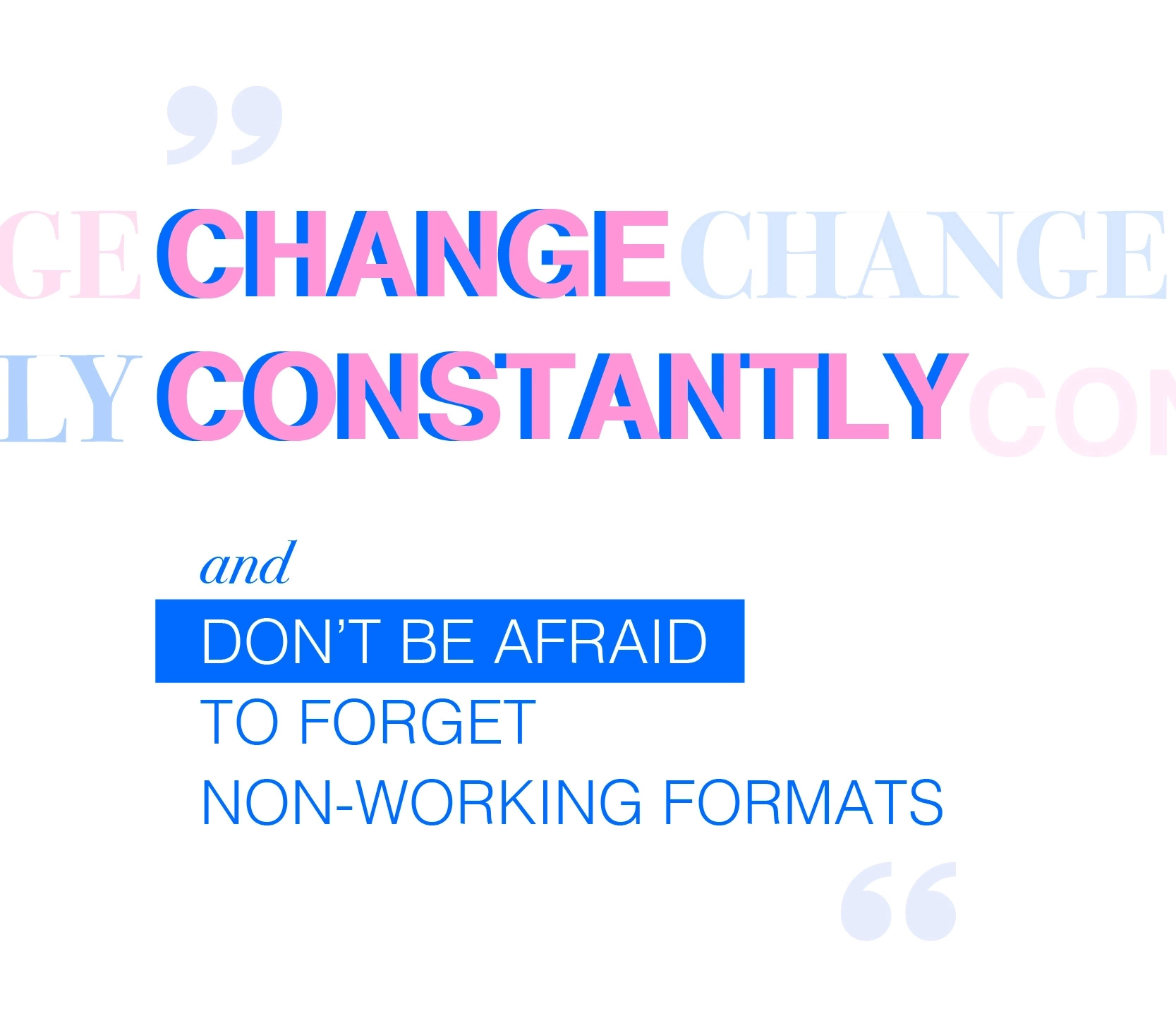What results did you achieve and what insights did you get with IO metrics tracking?
The main point is that IO Dashboard is convenient to work with "on the run". You don’t need to dig through a pile of internal pages with graphs and tables. Basic information is visible right away, and additional information is grouped logically. IO Dashboard is valuable precisely for its statistical conciseness. It eliminates the constant work with Google Analytics and Yandex.Metrika (these are services for working with large data sets for more thoughtful analysis).
IO Dashboard does not replace them, but gives another layer of statistics, which can be called an “editorial statistics layer”. General results for the selected period, results for authors and publications - this is minimum of necessary information. You look at the dashboard for a couple of seconds and feel the pulse of the Internet edition.
What metrics do you use most often and why?
The Results Dashboard is a very important tool. However, the recently released Monetization report in the updated backoffice is the most important one.
It is already two years of experience for Autoreview. I don’t exclude that the case of IO and Autoreview could be one of the first ‘paywall metrics’ experiments for IO. Actually, we began our cooperation as you agreed to add tracking subscriptions on the site. It was February 2016 when we restarted the Autoreview website in the burning mode (before, the company couldn’t set the wheels for it in motion for several years). No one could wait any longer, it was necessary to start the process now or never, such a typical story about leading a horse to water.
Surely, it was necessary to understand whether our paywall gives a sufficient inflow of money or not. Daily payment registries coming to our mail showed that paid access to the website justifies itself. The IO data showed which publications and sections are popular with subscribers. So, we could define our own policy better.
How many team members use analytics every day?
Probably, it is only me who uses it every day. The cause for this is that our main product is a paper version even in 2018. It may sound too optimistic, but we believe in the magazine. Although it can’t be compared to our digital products regarding the dynamics of growth. As soon as we become a digital-first publishing house, a dozen of Autoreview employees will use IO Dashboard.
Do you use the main page widget? Does it help improve the quality of its filling?
The widget for the main page is a cool thing. All our rotation of cards with the main page articles is provided by the widget statistics by 60%. There is no point in keeping an article on the first screen, if no one clicks on it. Therefore, the widget is irreplaceable.
As far as I understand, the Virtual Tour and Autoreview Parking are the elements of gaming, did they help involve clients better? This is a burning topic at the moment, it is interesting to hear your opinion.
Sections “Who and Where?” (in which cities and countries Autoreview journalists are working right now) and Autoreview Parking (a visualized list of cars from our future tests) were vital when restarting the site. This was done to give subscribers more than just access to articles that used to be published without any paywalls.
Someone in the editorial office and among readers considered this to be childishness, still, there are subscriptions from these sections. The most devoted readers will necessarily remind other interlocutors in the comments: "This test will soon be online, look at the Parking" or "Golovanov is in Maranello, it means that a story about a new Ferrari will be published soon".
Is there any know-hows to keep readers engaged in addition to high-quality content and interactive methods?
We are working on updating our website at the moment. A new format will be inside it, I'm making a big bet on it in the medium term. This is something that I personally and many other potential readers (not subscribers) lack in the consumption of media content. This update, of course, will be hidden behind the paywall, but at the same time we expect to set a lower than our current subscriptions price for it. Such a pleasant paradox.
What’s more, we hold online meetings with subscribers. At the end of 2017, they were invited to our crash test to the Dmitrovskiy testing ground as part of our ARCAP rating. This is a unique offer.
I would like to conduct such meetings more often, but we have to spend our personal time on events with subscribers, they need to be put on the rails.
What would you advice to young growing newsrooms? What should people look at when creating content and analyzing the results?
Do not chase the traffic from platforms increasing the share of direct enters in every possible way. The story with Facebook, when they give media resources less and less coverage, is a direct proof of that - all social networks can be out of the traffic at any moment. Advisory systems and aggregators are in favor now, primarily Yandex.Zen, but you can’t rely on them alone. No direct enters kill websites.
As for the essential: change constantly and don’t be afraid to forget non-working formats. For beginners, it is extremely important to quickly re-invent media depending on the audience’s needs, but not to change the basic settings at the same time.
Try IO on Your Own Data Now!






